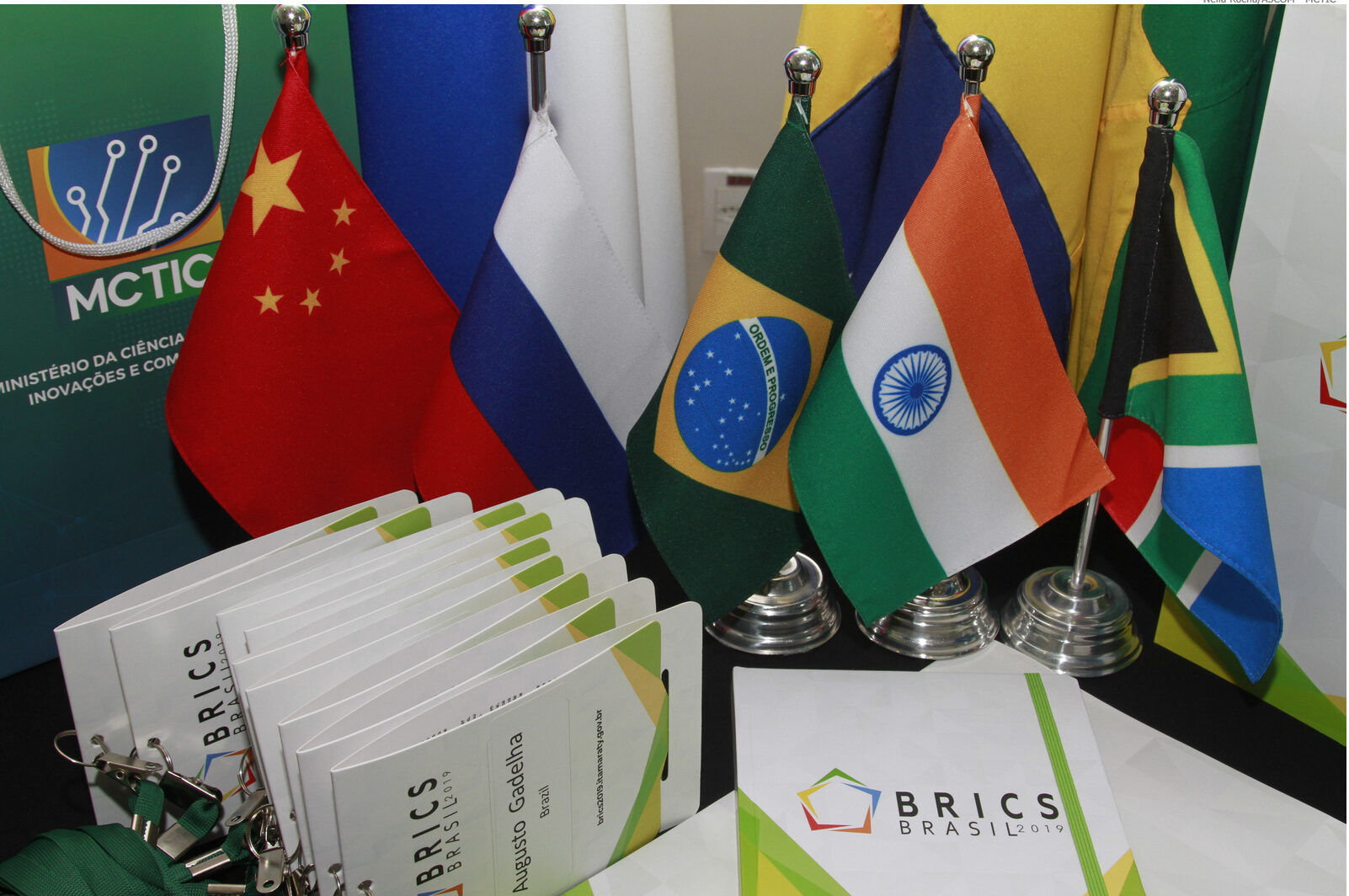The BRICS’ New Development Bank and Contingent Reserve Arrangement challenge Western dominance by funding development with fewer strings attached and pushing cautious steps toward de-dollarisation. But internal divisions and reliance on the existing system mean they risk looking less like bold alternatives and more like parallel institutions under new management.
The NDB and CRA – Parallel Institutions
One of the BRICS’s concrete achievements is a development bank (NDB), aimed at financing infrastructure and sustainable development in emerging and developing nations, operating without the traditional Western conditionalities often linked with Bretton Woods foundations (such as specific governance reforms or macroeconomic policy adjustments). Unlike the IMF and World Bank, which frequently tie loans to adjustment reforms, the NDB was founded on principles of multipolarity and equal voting rights, representing a deliberate attempt to bypass those traditional lending practices. With an authorised capital of 100 billion dollars, a capital of 52.7 billion dollars, and 96 projects approved to date, totalling 32.8 billion dollars and now extending beyond member states, the bank offers tangible infrastructure support (New Development Bank, 2025). Another cornerstone is the Contingent Reserve Arrangement (CRA), a financial safety net backed by a $100 billion resource pool, providing mutual support for payments burdens and enhancing the financial security of member states.
Beyond these established institutions, BRICS has also explored more ambitious avenues, such as creating a common BRICS currency or alternative payment systems, reflecting dissatisfaction with dollar-centric trade. In theory, this could mitigate vulnerabilities associated with dollar fluctuations and sanctions regimes. However, rather than converging toward full monetary integration, current efforts realistically focus on enhancing local currency settlements in intra-BRICS trade, a modest yet symbolically significant step. While the formation of a BRICS currency remains a distant and complex prospect due to macroeconomic and political divergences within the bloc, initiatives like the BRICS PAY system aim to create a parallel financial infrastructure. This strategy can be understood not as an immediate replacement for the dollar but as a long-term hedging strategy to mitigate exposure to US monetary policy and sanctions; the “weaponisation of finance”, referring to the use of financial tools for geopolitical leverage. It is a cautious but deliberate step towards building economic resilience and autonomy. To further illustrate the differences in approach and philosophy, the following Table 1 provides a comparison of key features between BRICS institutions and the established Bretton Woods institutions.
Table 1: A Comparison of BRICS vs. Bretton Woods Institutions
| FEATURES | BRICS Institutions (e.g. NDB, CRA) | Bretton Woods Institutions (IMF, World Bank) |
| Founding Philosophy | Multipolarity, Global South empowerment | Post-WWII Western-led liberal order |
| Dominant Currencies | Push for de-dollarisation, local currency swaps | US dollar-centric |
| Loan Conditionalities | Minimal political conditions, infrastructure focus | Structural reforms, liberalisation are often required |
| Governance Structure | Equal voting rights among members | Weighted voting based on financial contributions |
| Development Focus | South-South cooperation, sustainable infrastructure | Poverty reduction, macroeconomic stability |
| Crisis Response Mechanism | Contingent Reserve Arrangement (CRA) | IMF lending programs |
| Geopolitical Alignment | Non-Western bloc, strategic autonomy | Western alliances, US/EU influence |
| Institutional Flexibility | Emerging, adaptive, less bureaucratic | Established, rule-bound, slower to reform |
| Criticism Faced | Lack of transparency, China’s dominance | Conditionality backlash, legitimacy crisis |
Source: Author’s compilation.
Reform by Design or Hedging Diplomatic Strategy?
BRICS’ economic heterogeneity, monetary policy divergence, and lack of central fiscal authority present significant challenges to the feasibility of a common currency. Expansion efforts further diversify the bloc, suggesting a shift towards a more fluid and inclusive multilateral grouping. While BRICS initiatives demonstrate commitment, their fragmented execution raises questions about whether they represent genuine institutional design or simply institutional impersonation for geopolitical symbolism. The internal divergence within the bloc also poses practical governance challenges: can BRICS evolve into a new institutional architecture, or will expansion without a consolidated strategy dilute its efficacy? The fundamental question persists: do these initiatives truly model an alternative development ethos or merely replicate existing multilateral frameworks under different management?
For instance, scholars question the transformative potential of the NDB. Academics like Bond argue that the NDB’s lending practices, while presented as an alternative, have yet to fundamentally break from the neoliberal paradigms of its Bretton Woods-based counterparts. The bank’s modest lending portfolio, when compared to the Bretton Woods organisations or the Asian Development Bank, and its continued reliance on US dollars for most of its funding, limiting its ability to fully operate outside the influence of the US financial system, underscores the structural control of the existing monetary system. Eben suggests the institution may inadvertently replicate the conditionality-light lending practices of Bretton Woods bodies under different geopolitical management. Meanwhile, Molinari and Ceballos highlight limitations in operational scale and governance coherence that constrain their influence relative to legacy institutions. Together, these assessments highlight a tension at the heart of the NDB’s identity and raise the question of whether it is a radical alternative or a parallel system shaped by the same structural constraints.
Despite these critiques, it is important to recognise that viewing the NDB solely through this critical lens overlooks its symbolic and practical utility. As analysed by Griffith-Jones, the NDB’s existence provides developing nations with greater leverage and a substitute basis of funding, potentially reducing their reliance on the conditionalities often imposed by Western-led institutions. The NDB’s mandate to explore lending in local currencies is a direct response to the “weaponisation of finance”, a concern that has become particularly acute for members like Russia and China. This aligns with the broader BRICS agenda of de-dollarisation. While a common BRICS currency faces significant hurdles, the bloc has made incremental progress in promoting national currencies for bilateral trade through initiatives like BRICS PAY, representing a cautious but deliberate step towards building economic resilience and autonomy.
Conclusion
The bloc’s structural innovations, such as the New Development Bank, have proven more incremental than revolutionary, while its reformist potential is consistently tempered by deep internal divergences and fragmented strategic interests. However, its primary significance lies in its role as an institutionalised platform for “institutional balancing.” Its strength is not in enforcing immediate common policies, but rather in the cumulative, gradual erosion of the normative consensus underpinning the Liberal International Order.
Dr Marida Nach is a Postdoctoral Research Fellow and Lecturer in the Department of Economics at Nelson Mandela University, specialising in Economics and Development Finance, with a focus on International Economics, Finance, Trade, and the Digital Economy. Her research interests include South-South cooperation, particularly BRICS and AfCFTA integration.
This article is published under a Creative Commons Licence and may be republished with attribution.





